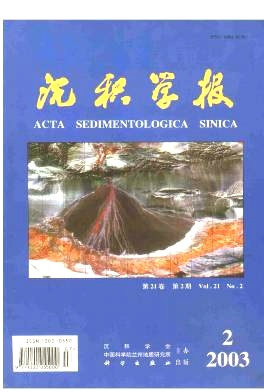WU Sheng-he, WU Jun-chang, LI Shu-jun, WU Zhi-yu. 3D Microfacies Modeling of Pingqiao Horizontal Well Region of Ansai Oilfield[J]. Acta Sedimentologica Sinica, 2003, 21(2): 266-271.
| Citation:
|
WU Sheng-he, WU Jun-chang, LI Shu-jun, WU Zhi-yu. 3D Microfacies Modeling of Pingqiao Horizontal Well Region of Ansai Oilfield[J]. Acta Sedimentologica Sinica, 2003, 21(2): 266-271.
|
3D Microfacies Modeling of Pingqiao Horizontal Well Region of Ansai Oilfield
- 1.
Institute of Resources and Information, University of Petroleum, Beijing 102249;
- 2.
Changqing Oilfield Corporation, CNPC, Xi'an 710021
- Received Date: 2002-03-11
- Rev Recd Date:
2002-07-09
- Publish Date:
2003-06-10
-
Abstract
Taking the Pingqiao horizontal well region of Ansai oil-field as an example, this paper deals with the method of 3D modeling of sedimentary microfacies using horizontal well and outcrop data and Marked Point Processes technique, in addition deeply study the quantitative architecture model of the delta front in study area. The oil-bearing strata of the study area is Chang 611 of Triassic Yanchang Formation, 20 m or so in thickness. The microfacies is distributary channel, splay and inter-channel shale. There are 10 vertical wells and 5 horizontal wells in the study area in addition to nearby outcrop. Research shows that the width of single channel sandbody is generally from 40 m to 100 m, smaller than the distance among vertical wells. There exist two kinds of reservoir architecture. One is labyrinth reservoir architecture, in which narrow and lenticular sand bodies are distributed discretely within lacustrine shale. The other is jigsaw-puzzle reservoir architecture, which consists of a series of channel sand bodies that laterally overlapped to continuous sandbodies, in which some lateral shaly or calcite non permeable barriers exist among single sandbodies. Geostatistical parameters for 3D microfacies modeling can be picked up effectively using horizontal well and nearby outcrop data. Research shows that Marked Point Processes method is adapt to 3D microfacies modeling of delta front reservoir with known sandbody geometry . The created microfacies model of the study atea is in line with dynamic production data.
-
References
|
[1]
|
裘怿楠,贾爱林.储层地质模型10年[J].石油学报,2000,21(4):101~ 104[ Qiu Yinan, Jian Ailin. Development of geological reservoir modeling in past de cadesy[J]. Acta Petrpolei Sinica,2000,12(4): 101~104 ] |
|
[2]
|
吴胜和,金振奎,黄沧钿等.储层建模[M].北京:石油工业出版社,1999.83~111[Wu Shenghe, Jin Zhenkui, Huang Cangdian, et al.Reservoir Modeling[M]. Beijing: Petroleum Industry Press, 1999. 83~111] |
|
[3]
|
Alabert F, Modot V. Stochastic rmodels of reservoir heterogeneity: impact on connectivity and average permeabilities [A]. SPE24893, SPE Annual Technical Conference and Guide[C]. Second Edition. Oxford University Press, 1996. 360 |
|
[4]
|
DamsleshE, et al. Atwo-stage stochastic model applied to a North sea reservoir[J]. JPT, 1992,April, 404~408 |
|
[5]
|
Haldorsen H,DamslethE. Stochastic Modeling[J]. JPT, 1990, 404~412 |
|
[6]
|
Joumel A G. Non-Parametric estimation of spatial distribution [J].Math Geol, 1983, 15:445~468 |
|
[7]
|
Matheron G, et al. Conditional simulation of the geometry of fluviodeltaic reservoirs[C]. SPE 16753,1987 |
|
[8]
|
MacDonald A C, Aasen J O. A prototype procedure for stoclastic modeling of facies tract distribution in shoreface reservoirs[A]. In: Yarus and Chamber, eds. Stochastic modeling and geostatistics: principles,methods, and case studies[C]. AAPG Computer Application in G eology, 1994,3:77~89 |
|
[9]
|
Srivastava R M. An overview of stochastic methods for reservoir char acterization[A]. In: Yarus and Chamber,eds. Stochastic modeling and geostatistics: principles, methods, and case studies[C]. AAPG Computer Application in Geology, 1994, 3:3~20 |
-
-
Proportional views

-






 DownLoad:
DownLoad: